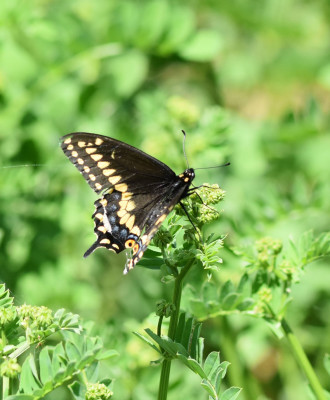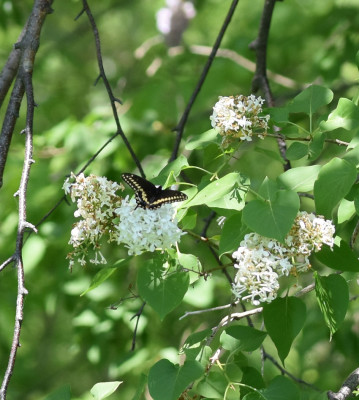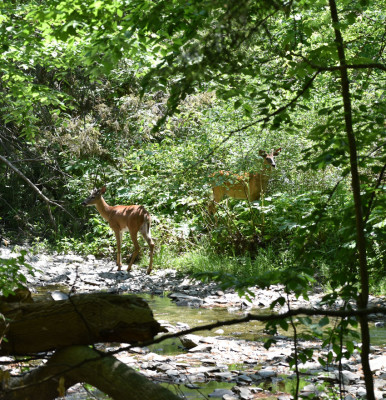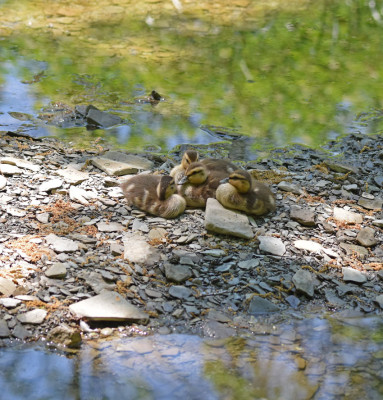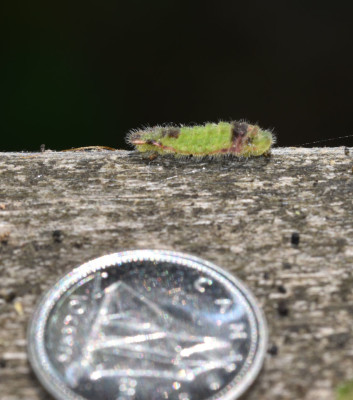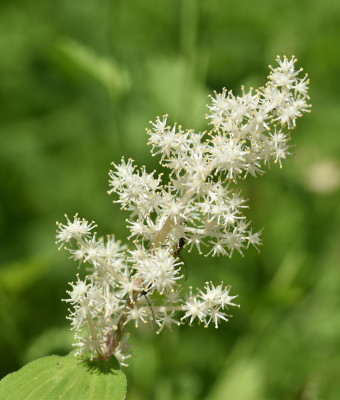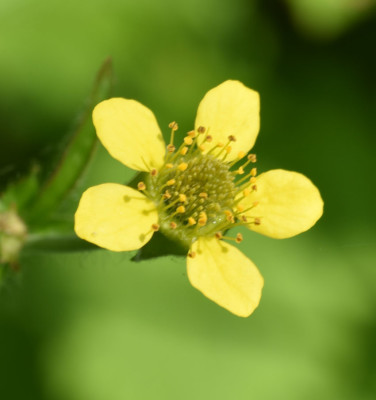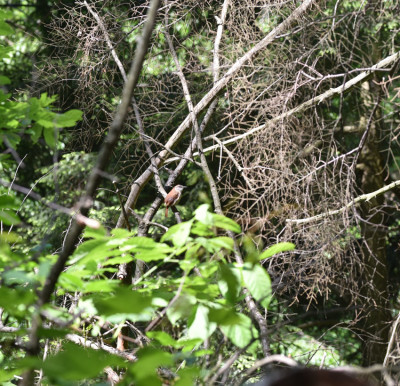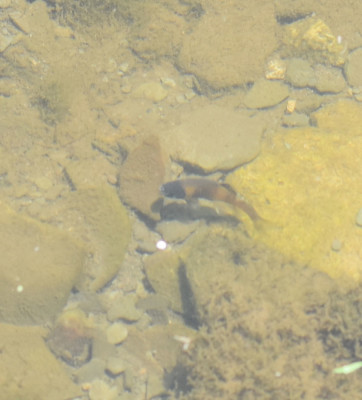Walking through the Rattray Marsh in early June it’s difficult to decide what to choose to look at first. The wildflowers are bursting into bloom, the spring ephemerals are setting seeds and the vines are twining rapidly upwards. Some nests are empty already as the ducklings, cygnets and fledglings move out still under the care of their parent or parents. Others don’t even have eggs yet. Over top of the streams and ponds, water striders glide and dragonflies patrol. Underneath the surface, you can see fish guarding their territories and newly hatched minnows on the move. Insects on offer include family-favourite butterflies and some really revolting creatures. Here are just a few of the many living things I noticed on a recent ramble.
Black Swallowtails Seek Parsley, Carrots, Dill, Celery, Queen Anne’s Lace and Each Other
Near the junction of Jack Darling Park and the Rattray Marsh is a lookout with two benches facing the Lake and the Toronto skyline. Goldenrod and asters grow in profusion here and I spent a memorable fall afternoon watching Nashville Warblers darting among them. Today, I was watching Black Swallowtail butterflies instead.
Two of the ones I saw were males. They have the double row of vivid yellow spots making them easy to identify at a distance. (The females usually have much smaller, subdued spots and much more noticeable blue patches near their body at the bottom of the hindwings.) These two males were actually perching a couple of feet apart down a narrow footpath to the water’s edge. When one lifted into the air, though, the other quickly rose too in a battle for this chosen territory. Circling each other up into the sky for a few seconds, the one male gave up and flew off. The victor then started patrolling a patch of open ground.
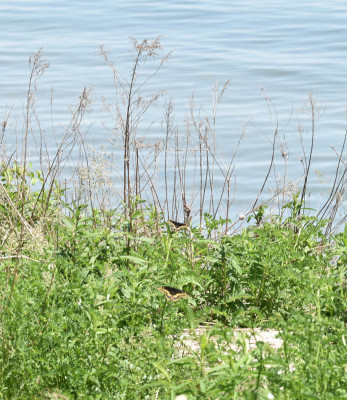
Those two fuzzily-focused butterflies are both male Black Swallowtails.
Once I realized that it was going to stay here and patrol, I stayed still and watched as it flew. It perched briefly on a lilac’s blossoms at one edge of the open ground and fed for a few seconds. Then it was up and back and work moving in an asterisk shape of lines across the claimed patch of land to its far sides and back.
When it settled, I would take a few photos. Each time hoping it would land closer and for a longer time. It wasn’t interested in resting, though. It met what I believe was a female, for they danced up for a second, then both descended into the vegetation out of sight for a minute. When my male came back, he was alone, so I never got a good glimpse at the other Swallowtail.

This male has been through some rough times: he’s missing a “swallowtail” and has holes near the upper wing tips.
Ten minutes after I stopped to stand along the narrow footpath in the Swallowtail’s territory, my patience was rewarded. Exhausted from chasing off rivals, possibly from a romantic encounter, and only partially restored by two trips to the lilac blooms to feed (and two to just investigate without stopping), the Black Swallowtail settled on a perch to rest. I stepped cautiously closer, taking photos along the way, trying not to make it waste energy by flushing it. (I knew it wasn’t particularly interested in me, though, because it had flown within inches of me several times earlier without distress.) Once I got a few photos that I hoped were clear, I edged back away, leaving it to choose when and where to fly.
Ducklings and Deer: People Aren’t the Only Families Enjoying Saturday at the Rattray
Lots of families were walking their toddlers and terriers around the boardwalks at the Rattray. In flagrant violation of the “please keep on the paths” signage, however, the White-tailed Deer were splashing through the creek and stopping to munch on interesting fresh growth along the banks. One group I saw appeared to be an adult doe and her year-old daughter.
From the Knoll path, I had a close-up view of a group of 4 ducklings. Their mother was watching intently from a different shoal quite close by. A male Mallard was slightly further up stream but I don’t know if he was keeping the mother company or not. Generally the females raise the young on their own.
Inchworms Bonanza
This particular day, several hundred Inchworms, or Cankerworms, had decided to spin down from the tree tops on their annoying little webs and land on the board walk near the Knoll path. As they tend to do, they then looked for something to climb back up and they mountaineered up to the top of the hand rail. There, to their dismay, the route up ended. So they measured their way along the railing seeking in vain for the next upwards leading tree trunk.
Among the many dark and light coloured inchworms, I found this one other type of caterpillar speedily walking along the railing. I’m not sure what type it is; if you know, please leave a comment at the end of the article. (To see the Comment text box, you may have to click on the title of this article to open it in its own window.)
UPDATE: There is a good chance that this is a Banded Hairstreak caterpillar, based on a guide book I was perusing at the Credit River BioBlitz.
Wildflowers Brighten Up the Boardwalks
Late spring wildflowers lined the paths and boardwalks at the Marsh. The white spikes of False Solomon’s Seal promised a good crop of berries for the chipmunks later in the summer.
Yellow Avens always look scruffy to me but the individual blossoms can be attractive when they are newly opened. Later on the plants will have annoying seeds that stick to clothing.
The small five-petalled pink blossoms of Herb Robert lighten the shadier spots under the trees. It’s a type of wild Geranium and its fruit is a Schizocarp. Who knew? (That just means that the fruit splits into pieces when it’s ripe, with each piece holding a single seed, or so my dictionary says.)
This Fleabane could be Daisy or Philadelphia or even another breed. I didn’t think to look closely at its leaves and other telling features so it shall remain somewhat nameless.
A Closeup Lens Makes for Distant Views
I did see some birds while prowling around but I didn’t change my lens. So there is a Carolina Wren in this photo that I heard cheerfully belting out its song—but it may be difficult to see it!

Similarly, you can sort of recognize the outline of this Cooper’s Hawk tending its young but mostly because we know that’s whose nest it is.
It was interesting to watch these middle-finger-sized fish defend a small territory on the bottom of Sheridan Creek from all other fish. Unfortunately, this view using the close-up lens makes it even harder to guess what kind of fish they are, though.
No matter what lens I look through, the Rattray is a great park to explore on a sunny spring day. I hope I get another chance to visit this week.
Related Reading
- A Great Egret Stalks Snacks
- A Rainy Day at the Rattray Brings Out the Birds
- A Snapping Turtle Confuses Me
- Will Spring Come to South Mississauga?
- Water Striders Glide into Spring at the Rattray Marsh
- White Suckers Swim Upstream to Spawn
Join In
Do you have a favourite park to visit in June? Please share your views with a comment.

